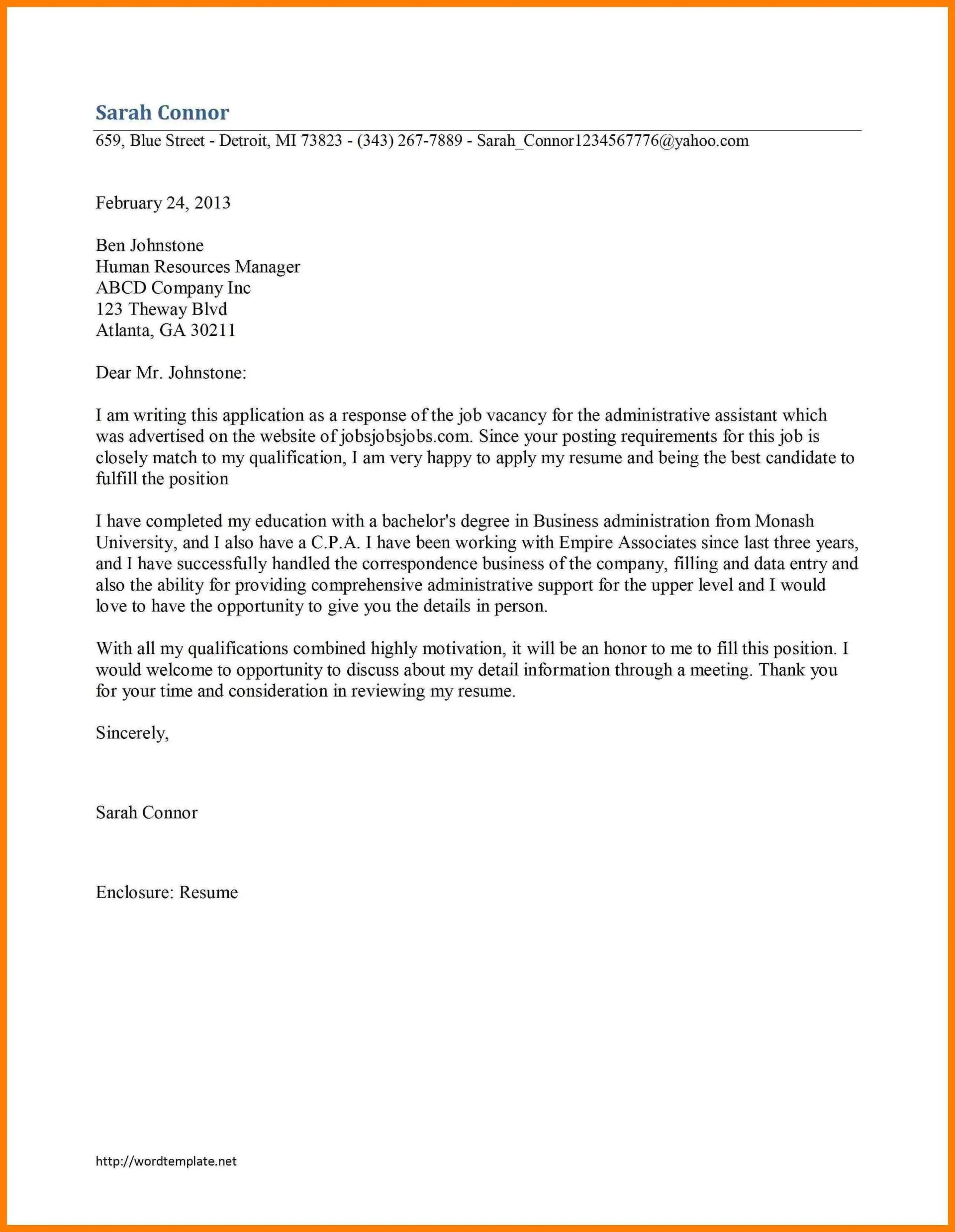Understanding Internal Position Cover Letters
Navigating the internal job market requires a strategic approach, and a well-crafted cover letter is your key to success. Unlike external job applications, internal applications offer unique opportunities and challenges. Understanding the nuances of an internal position cover letter is crucial for showcasing your qualifications, expressing your interest, and ultimately, landing the job. This guide provides a comprehensive overview of how to write an effective internal cover letter, including a template and tips to help you stand out from the competition and make a strong impression on the hiring manager. Whether you’re aiming for a promotion, a lateral move, or a change in department, this information will empower you with the knowledge and tools needed to succeed.
Why You Need a Cover Letter
In today’s competitive job market, a cover letter is not just an optional add-on, but a necessity. For internal positions, a cover letter serves as a crucial tool to demonstrate your interest, highlight your qualifications, and explain your motivation for seeking a new role within the company. It allows you to go beyond the information provided in your resume, providing context and showcasing your personality and enthusiasm. The cover letter is your chance to tell a story, connecting your skills and experience with the specific requirements of the internal position. It allows you to emphasize why you are the best fit for the role and how you can contribute to the company’s success. It also shows your dedication and professionalism, setting you apart from other internal candidates who might not take the time to submit a cover letter.
Key Differences from External Cover Letters
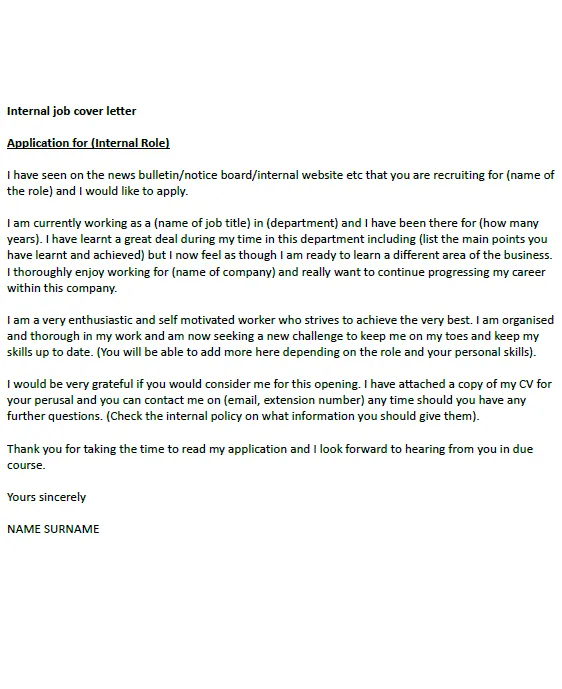
While the basic principles of cover letter writing remain consistent, internal and external cover letters have distinct differences. Internal cover letters should be tailored to a company you already know, focusing on your existing knowledge of the organization, your internal network, and your understanding of the company’s culture and values. Unlike external cover letters where you might highlight your interest in the company, internal cover letters allow you to emphasize your established commitment to the organization and your desire to contribute to its continued success. They should showcase your awareness of the company’s current projects, goals, and challenges. You’ll be able to discuss how you can leverage your existing skills to address current needs. This demonstrates your internal experience and your deep understanding of the company and how your new position will benefit the organization.
Essential Elements of an Internal Cover Letter
Crafting a compelling internal cover letter requires a strategic approach that addresses key elements. By incorporating these essential components, you can effectively communicate your qualifications and increase your chances of securing an interview. From the salutation to the closing, each element plays a crucial role in conveying your message and leaving a lasting impression. Knowing how to structure the information to highlight your most relevant skills and experiences while aligning them with the job description is important. Using strong action verbs to emphasize your achievements is also crucial. Taking the time to customize your cover letter to each specific internal position demonstrates your genuine interest and commitment to the company.
Heading and Salutation
Begin your cover letter with a professional heading that includes your contact information (name, phone number, email address), and the date. If possible, address the hiring manager by name; this personal touch can make a significant difference. Use a formal salutation such as “Dear Mr./Ms./Mx. [Last Name],” showing that you’ve taken the time to research the person who will be reviewing your application. If you are not certain of the hiring manager’s name, a general salutation like “Dear Hiring Manager” is acceptable. Always make sure you are using proper grammar and correct titles. This shows that you respect the position and the company. This initial step is a critical component in crafting a strong first impression.
Expressing Your Interest and Mentioning the Position
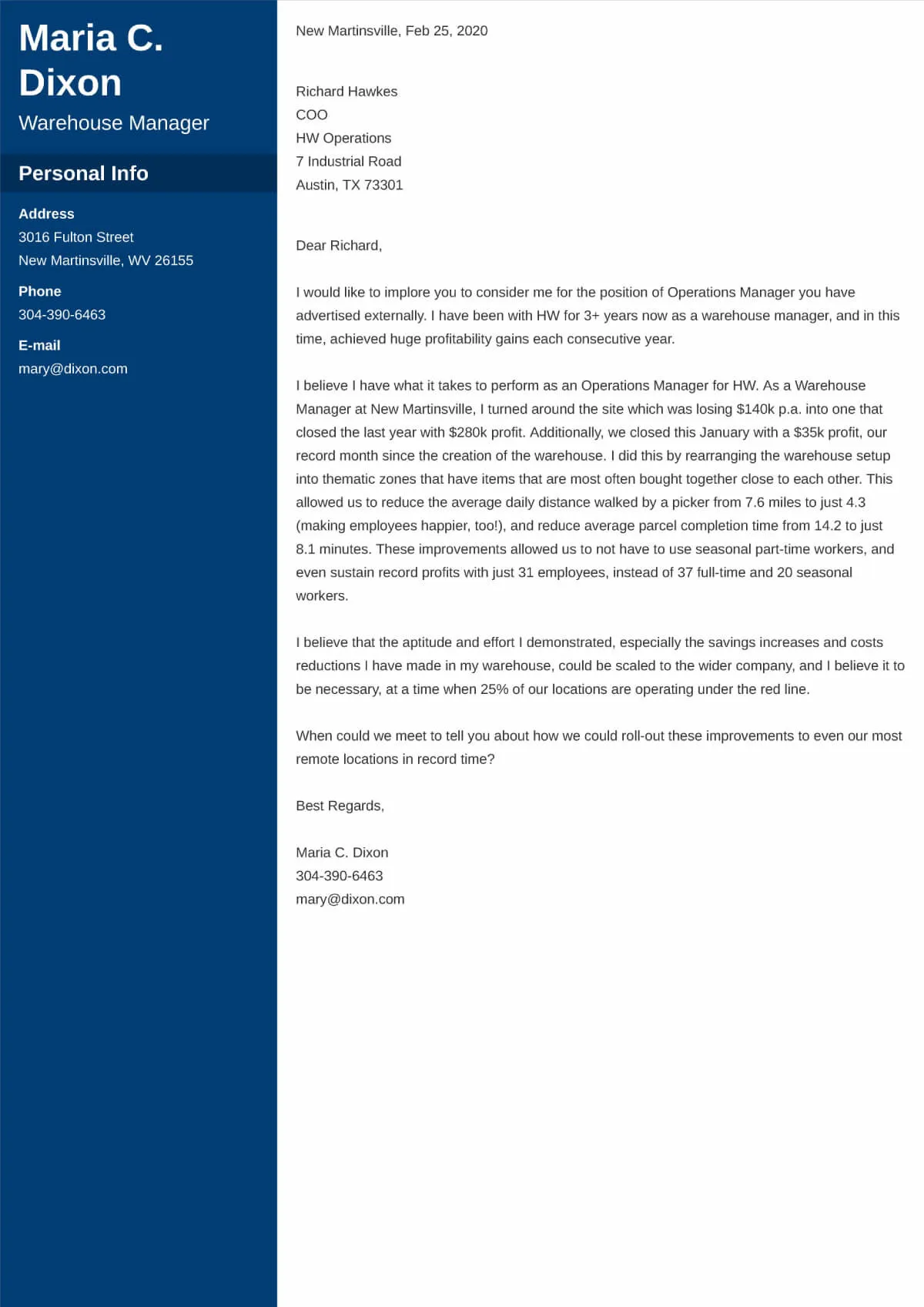
In the opening paragraph, clearly state the position you are applying for and how you learned about the opportunity. If an internal referral or recommendation led you to apply, mention the name of the person who recommended you. This shows your willingness to network and use company connections to your advantage. This opening is critical. It sets the stage for the rest of the letter and helps the hiring manager quickly understand your purpose. By explicitly stating the position and your method of application, you establish your professionalism and streamline the application process. The tone is also important, and can show your understanding of the position.
Highlighting Relevant Skills and Experience
The core of your cover letter should focus on demonstrating how your skills and experience align with the requirements of the internal position. Review the job description carefully and identify the key skills and qualifications the company is seeking. In your body paragraphs, provide specific examples from your past roles and projects to illustrate how you have successfully used these skills. Quantify your achievements whenever possible by using numbers and data to show the impact of your work. This provides concrete evidence of your capabilities and distinguishes you from other candidates. Showcasing how you have previously succeeded in the organization can also give the hiring manager insight into how you will do in your future position.
Quantifying Achievements
Instead of merely listing your responsibilities, quantify your accomplishments using metrics, numbers, and data. This provides concrete evidence of your capabilities and the impact you’ve made in previous roles. For example, if you improved a process, state the percentage of efficiency increase. If you led a project, include the number of team members and the project’s overall results. Quantifying your achievements adds credibility to your claims and shows that you can deliver tangible results. It helps the hiring manager to understand the value you bring to the organization and how you can contribute to the new role. It can also help create a vivid picture of what you have done previously.
Using Action Verbs
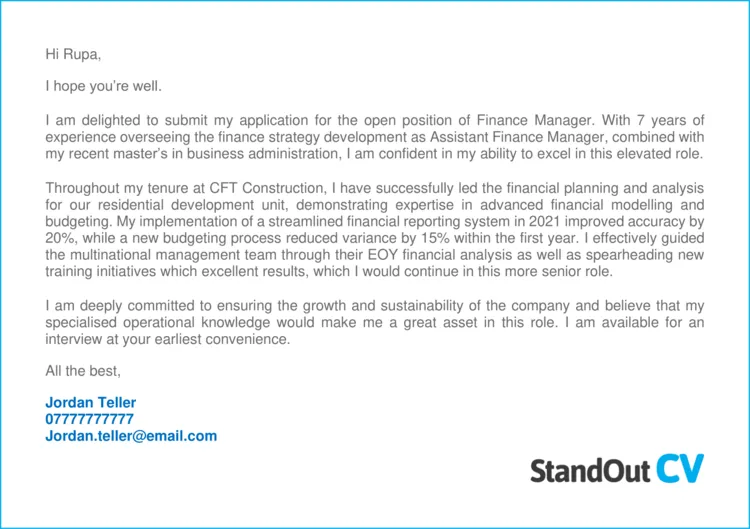
Employing strong action verbs is an effective way to showcase your skills and experience. Action verbs such as “managed,” “led,” “developed,” “implemented,” “achieved,” and “improved” make your sentences more dynamic and impactful. They bring your accomplishments to life and create a compelling narrative. When describing your responsibilities and achievements, use a variety of action verbs to demonstrate your versatility and expertise. Always select verbs that accurately reflect your actions and the results you achieved. This linguistic detail can help your cover letter make a lasting impression and demonstrate your proficiency. It shows that you understand the impact that your previous actions have had on the company.
Demonstrating Company Knowledge
Internal candidates have a unique advantage when it comes to demonstrating their knowledge of the company. Use this advantage to show you understand the company’s mission, values, current projects, and goals. In your cover letter, mention specific initiatives or projects you’re familiar with and explain how your skills and experience align with them. Showcase your understanding of the company’s challenges and how you can contribute to finding solutions. This demonstrates your long-term commitment and your ability to hit the ground running in the new role. Doing the research shows that you are interested in the position and that you want to go above and beyond. This also shows your knowledge of the position.
Explaining Your Motivation for the Role
In the body of your cover letter, clearly explain why you want the internal position. Detail your motivation for seeking the role and how it aligns with your career goals. Highlight your enthusiasm for the new opportunity and your commitment to contributing to the company’s success. Focus on what excites you about the new role, the skills you hope to develop, and how you envision making a positive impact. Expressing your personal and professional growth and how the new position will help you achieve it is important. Demonstrating your passion for the company’s mission and your drive to take on new challenges will make you a standout candidate. The hiring manager will see how much you want the position and why.
Closing the Letter
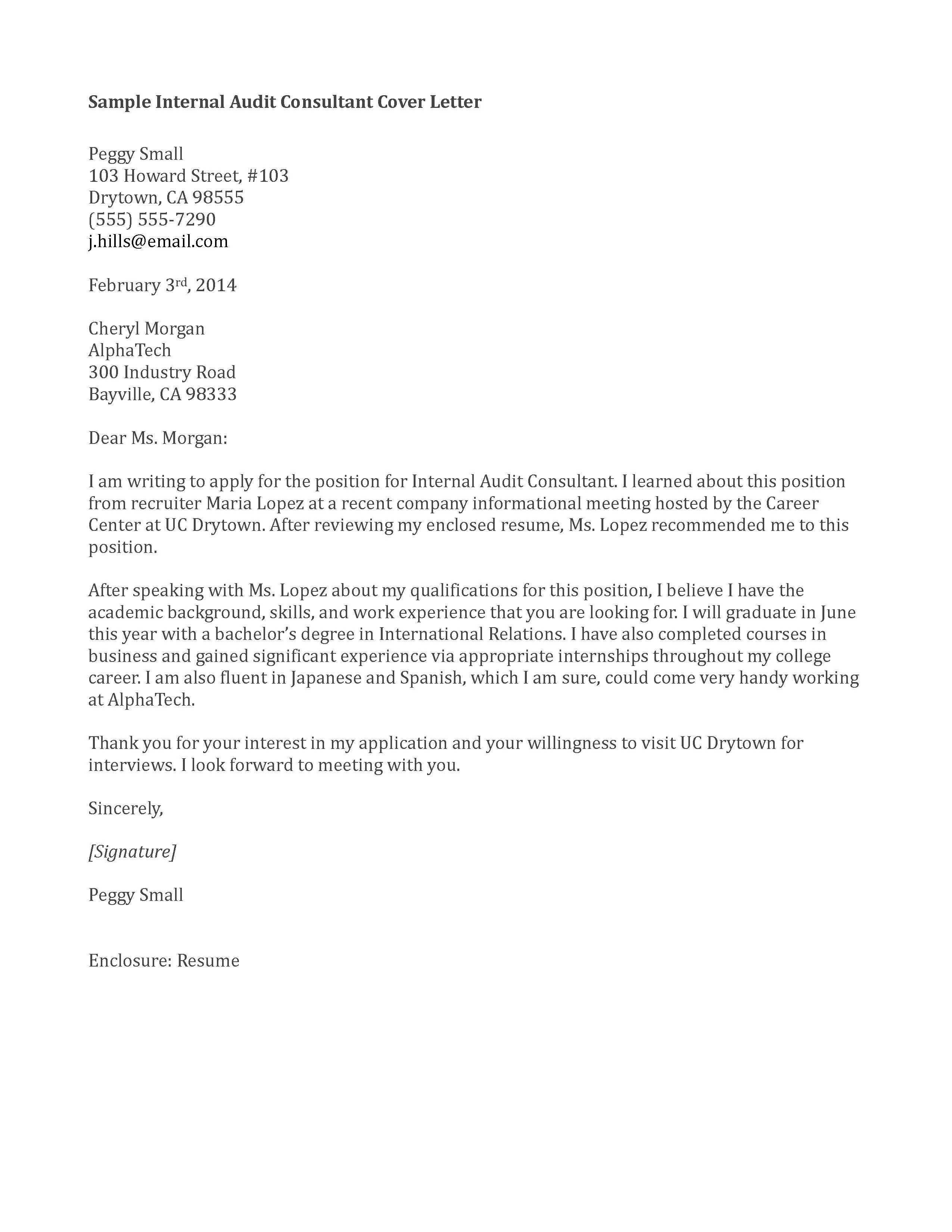
Conclude your cover letter with a strong closing that reiterates your interest in the position and expresses your eagerness for an interview. Thank the hiring manager for their time and consideration. Include a call to action, such as stating that you are available for an interview and look forward to discussing your qualifications further. Reiterate your commitment to the company. Your closing paragraph leaves a lasting impression. It reinforces your enthusiasm and allows you to end on a positive and confident note. Reiterate why you are qualified for the position and let them know you are ready for the next step in the hiring process.
Cover Letter Template Example
Here’s a template you can adapt to create your own internal position cover letter. Remember to customize it with your specific details, skills, and experiences to create a document that is specific to you and the position you are seeking.
Heading Section
Your Name Your Address Your Phone Number Your Email Address
Date
Hiring Manager Name (if known), or Hiring Manager Company Name Company Address
Salutation
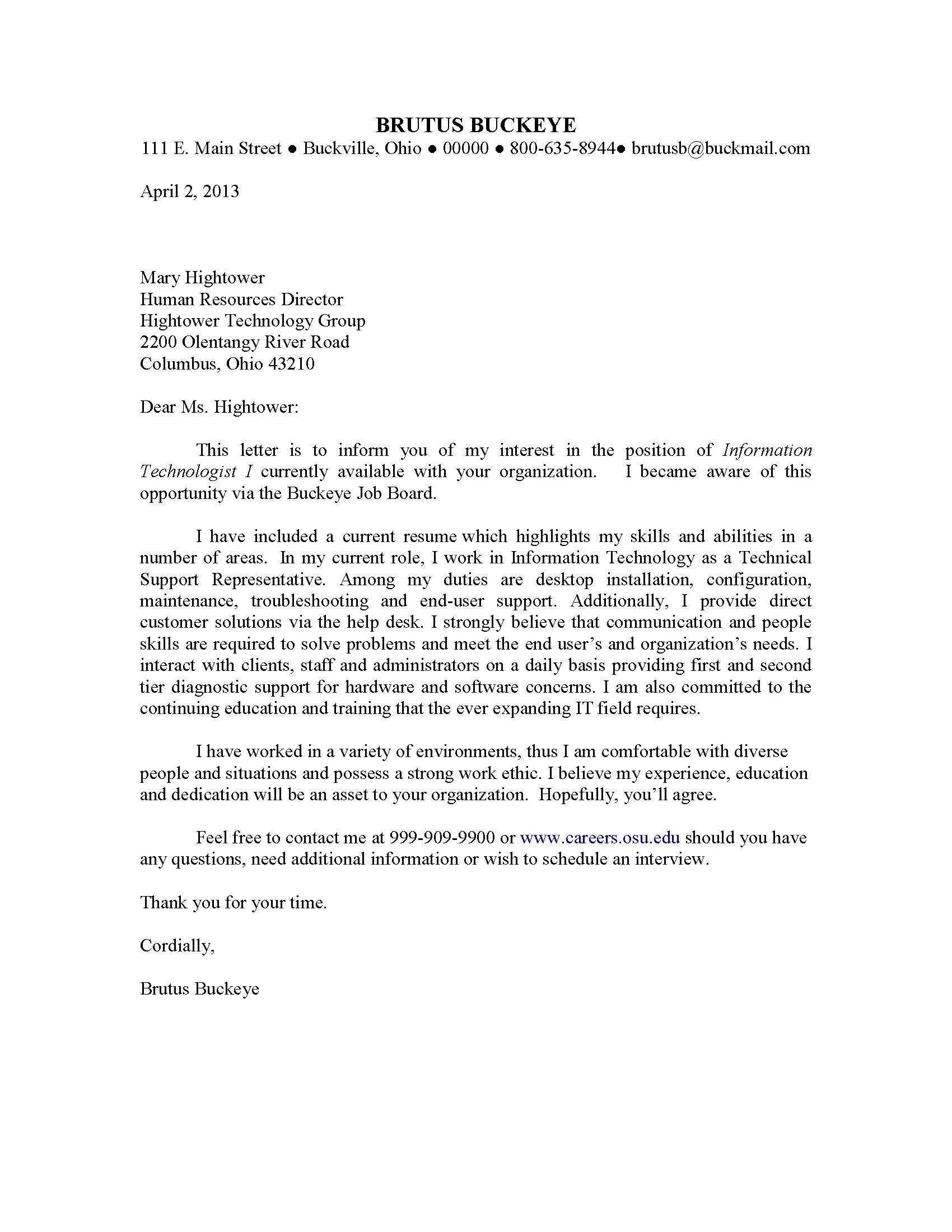
Dear Mr./Ms./Mx. [Last Name], or Dear Hiring Manager,
Body Paragraph 1
Express your interest in the position and how you found the job opportunity. Example “I am writing to express my interest in the [Job Title] position at [Company Name], as advertised on [Platform].” or “I was excited to learn of the [Job Title] position internally and am eager to apply.”
Body Paragraph 2
Highlight 2-3 key skills/experiences relevant to the role, using specific examples and quantifying your achievements. Example “In my previous role as [Previous Role] at [Company Name], I was responsible for [Responsibilities]. I successfully [quantifiable achievement] by [action taken].”
Body Paragraph 3
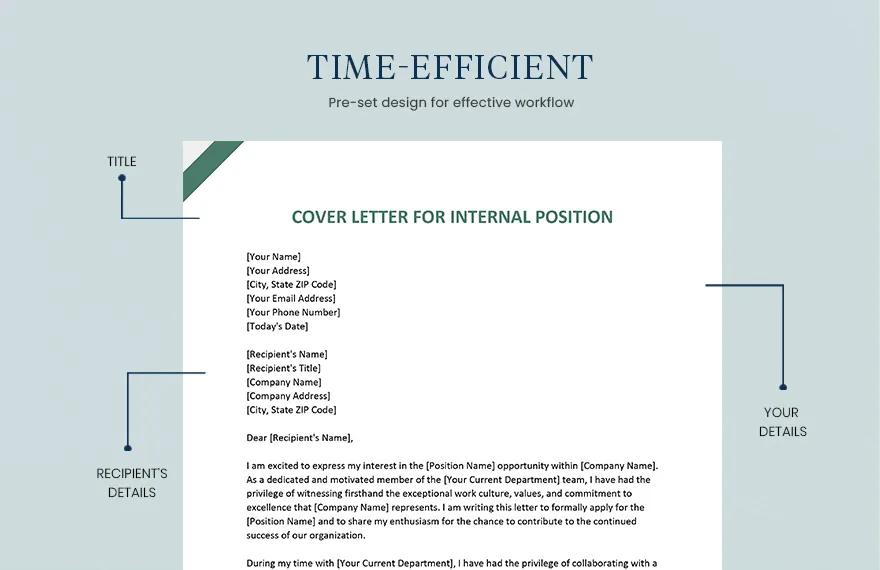
Showcase your knowledge of the company and explain your motivation for the role. Example “I am passionate about [Company’s mission] and excited about the opportunity to contribute to [specific project/goal]. I am confident that my skills in [skill 1] and [skill 2] will allow me to excel in this role and help achieve the goals of the company.”
Closing
Restate your interest, thank the hiring manager, and include a call to action. Example “Thank you for your time and consideration. I am available for an interview at your earliest convenience. I look forward to discussing how I can contribute to [Company Name]’s success. I appreciate your time and look forward to hearing from you.”
Sincerely, or Best Regards, Your Name
Tips for Customization
To make your cover letter stand out, customizing it is key. Tailoring the document to the specific role, proofreading meticulously, and seeking feedback will make sure it’s perfect. By incorporating these elements, you can create a cover letter that resonates with the hiring manager and strengthens your chances of landing the internal position you desire. These tips will help you create a compelling cover letter that reflects your unique strengths and sets you apart. These additional steps will take your cover letter from good to great and improve your chances of an interview.
Tailoring to the Specific Role
Carefully read the job description for the internal position you’re applying for. Identify the key skills, qualifications, and experiences the company is seeking. Customize your cover letter to directly address these requirements. Emphasize how your skills and experiences align with the job description. Provide specific examples that showcase your accomplishments. This targeted approach demonstrates that you understand the role. It shows that you have taken the time to tailor your application to meet the company’s specific needs and preferences. Tailoring your cover letter makes a big difference.
Proofreading and Formatting
Proofreading is a crucial step in creating a professional cover letter. Errors in grammar, spelling, and punctuation can undermine your credibility and diminish your chances of success. Before submitting your cover letter, carefully review it for any mistakes. Use grammar-checking tools and ask a colleague or friend to proofread it as well. Ensure your cover letter is well-formatted, with a clear font, consistent spacing, and appropriate margins. A well-formatted and error-free cover letter reflects your attention to detail. A good cover letter shows that you take the role and the company seriously. It also shows that you want the position.
Seeking Feedback
Before submitting your cover letter, ask a trusted colleague, mentor, or career advisor to review it. They can provide valuable feedback on the content, clarity, and overall effectiveness of your letter. A fresh perspective can help you identify any weaknesses or areas for improvement. Their feedback can also make sure you meet the required qualifications for the position. Taking advantage of their advice can help you refine your cover letter and improve your chances of securing an interview. Asking for feedback is an important part of the process.
Common Mistakes to Avoid
Avoiding common mistakes is an essential step in writing an effective internal position cover letter. By being aware of these pitfalls, you can ensure your cover letter presents you in the best possible light and increases your chances of securing an interview. Many candidates make mistakes during the process. Being sure to avoid these will set you apart and help you succeed. Remember that the cover letter is your opportunity to leave a lasting impression.
Generic Content
Avoid using generic language or a “one-size-fits-all” cover letter. Tailor your cover letter to each internal position you apply for, highlighting specific skills and experiences. Do not reuse the same cover letter for multiple applications. Customize your letter to the specific requirements of each role. Use the language of the job description to demonstrate a clear understanding of the position and the company’s needs. This demonstrates your genuine interest and that you have the required skills and experience. Always make sure you show that you know the role you are applying for.
Focusing Solely on Past Roles
While it’s important to highlight your past accomplishments, avoid focusing solely on your past roles. Balance your experience with a discussion of how your skills and knowledge align with the requirements of the new position. Emphasize your ability to contribute to the company’s future goals. Illustrate how your previous experiences have prepared you for the new role. Explain your motivation for taking on the new opportunity. Show the hiring manager that you are not just looking back at your past. Show them that you are looking forward to the future.
Neglecting Company Culture
Demonstrate your awareness of the company’s culture and values. Avoid neglecting these important elements in your cover letter. Show your understanding of the company’s mission, goals, and initiatives. Mention specific projects or achievements that showcase your alignment with the company’s values. Express your enthusiasm for the company’s culture and how you contribute to it. Highlighting your appreciation for the company’s culture shows your understanding and acceptance. Including this element shows that you are a team player and will fit well within the company’s culture. Not focusing on company culture can hurt your chances of landing the role.
